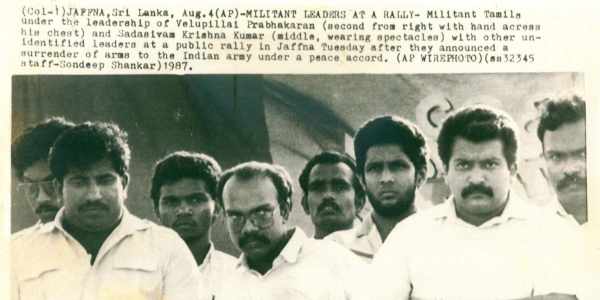

To explain the Tiger's internecine massacres, the English-speaking Tamil Tiger ideologue Anton Balasingham once remarked: "Down the history of liberation struggles all over the world, the big fish swallows the smaller fish.

The attacks were a terrifying but strategically brilliant weapon which could rarely be stopped and struck fear into the hearts of ordinary Sri Lankans.
#Tamil eelam leader prabhakaran series
Long before Islamic jihadists realised the effectiveness of suicide bombs, LTTE cadres from the group's fanatical Black Tiger regiment, many of whom were women, carried out a series of spectacular assassinations, including the murder of India's prime minister Rajiv Gandhi in 1991 and the Sri Lankan president Ranasinghe Premadasa two years later. Fleeing into the jungle, he set up the LTTE, which quickly became the most effective, efficient and ruthless Tamil rebel group fighting the government. His ragtag gang of young nationalists calmly walked up to the governor outside a Hindu temple and gunned him down.ĭecades of Sinhalese domination and anti-Tamil policies had created a wealth of seething anger among Sri Lanka's Tamils Prabhakaran's bullet was the spark that finally set the island alight. Born on 26 November 1954 in the northern coastal town of Valvettithurai, Prabhakaran almost single-handedly ignited the Tamil insurgency when he was 21 by assassinating the governor of Jaffna. He was the middle-class son of a pious government-employed agronomist Prabhakaran's descent into violence was swift and brutal. Eventually the peace talks stalled, Wickremasinghe lost the next presidential election to the hardliner Mahinda Rajapaksa and Prabhakaran's fate was slowly sealed. In fact, most people who met him were surprised that such a quietly spoken man could be the feared and brutal leader he was known to be.

But the high-pitched voice was the same, a soft demeanour which belied Prabhakaran's unwillingness to give up the gun. The cyanide capsule worn around his neck as a last resort also remained hidden. When he addressed the gathered journalists, the signature tiger-stripe camouflage uniform and sidearm that he had always worn had been replaced with a more palatable high-buttoned bush jacket. Yet to the thousands of fighters who followed him to their deaths, and to the millions of Tamils scattered around the world who donated handsomely to the LTTE's coffers, the reticent 54-year-old was a hero and demigod. To his detractors, the founder of the Liberation Tigers of Tamil Eelam (LTTE) was little more than a ruthless terrorist who pioneered the use of suicide bombings to assassinate two heads of state, viciously annihilated his own Tamil critics and stubbornly refused any compromise that might have led to peace. For nearly 30 years, the moustachioed commander's brutal war to create an independent "Eelam" (homeland) for Sri Lanka's minority Tamils teetered on the often thin line between a struggle for liberation and outright terrorism. If there was ever a competition to find the person who summed up the adage which says that "one man's terrorist is another man's freedom fighter", then Velupillai Prabhakaran, the rotund but fearsome leader of the Tamil Tigers, would have been a strong candidate.


 0 kommentar(er)
0 kommentar(er)
